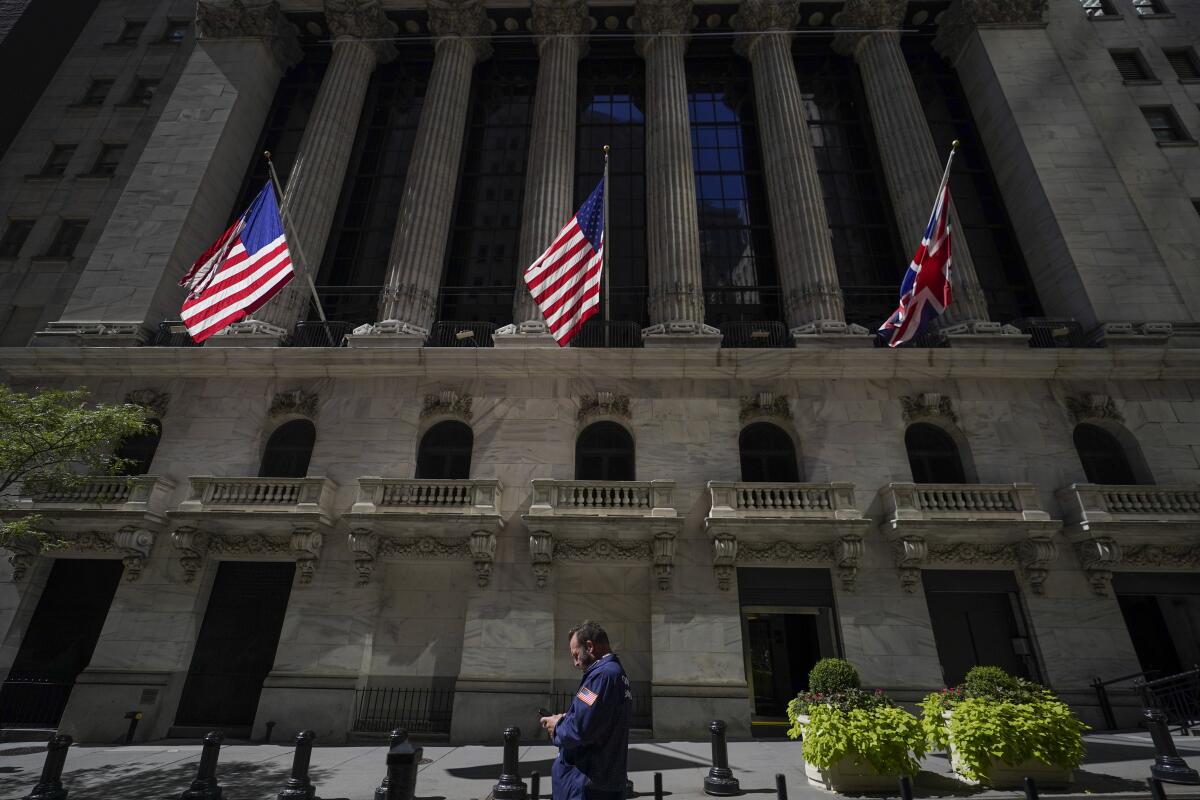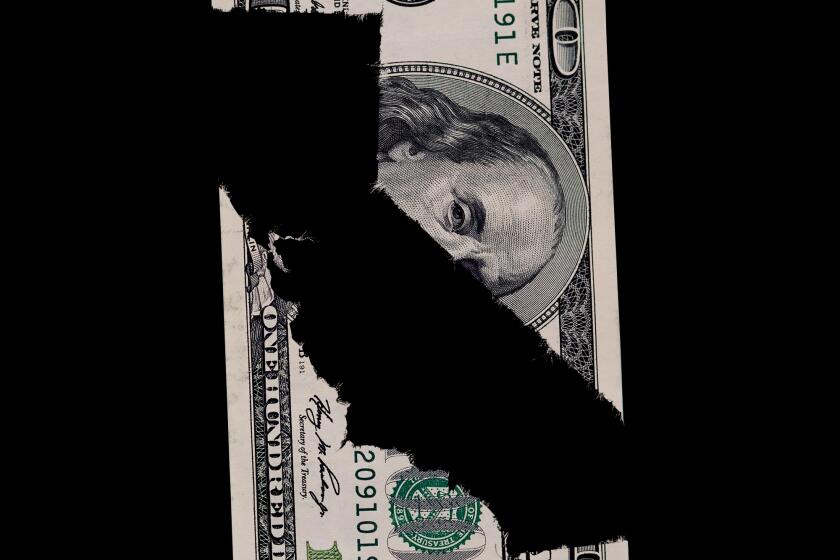Wall Street slips from all-time high as interest rate cuts look further off

- Share via
Stocks slipped Monday after the latest signal that the economy remains strong, which could delay the interest rate cuts that Wall Street wants.
The Standard & Poor’s 500 fell 15.80 points, or 0.3%, to 4,942.81 from the all-time high set Friday. The Dow Jones industrial average dropped 274.30 points, or 0.7%, to 38,380.12, and the Nasdaq composite edged down by 31.28 points, or 0.2%, to 15,597.68.
Earnings season is near its midpoint, and roughly half the companies in the S&P 500 have reported their latest results, including many of the market’s most influential. Estee Lauder jumped 12% after it reported better revenue and profit than analysts expected. McDonald’s, meanwhile, fell 3.7% despite reporting stronger profit than expected. Its revenue for the latest quarter fell just short of forecasts.
Companies that have been missing analysts’ estimates for earnings this reporting season have been seeing their stocks get punished even more than usual, according to strategists at Bank of America.
Stocks broadly felt pressure from another jump for yields in the bond market. They rose as traders on Wall Street delayed their expectations for when the Federal Reserve will begin cutting its main interest rate.
New data show the increasingly crucial role immigrants play in the economy and the American workforce — especially in California.
The Fed has yanked the federal funds rate to its highest level since 2001 to bring down high inflation. High rates intentionally slow the economy by making borrowing more expensive and hurting investment prices.
Federal Reserve Chair Jerome H. Powell said again in an interview broadcast Sunday that the Fed may cut interest rates three times this year because inflation has been cooling. But he also indicated again in the interview on “60 Minutes” that the Fed is unlikely to begin the cuts in March, as many traders had earlier hoped.
After the interview, traders pushed out some bets for the cuts to begin in June instead of May, according to data from CME Group.
At Goldman Sachs, economist David Mericle is still forecasting cuts to begin in May. After Sunday’s interview, though, he sees a greater chance of rate cuts beginning later than that and happening in a steeper fashion.
The yield on the 10-year Treasury climbed to 4.16% from 4.09% late Friday and from less than 3.80% late last year.
In a reversal from past decades, more college graduates and professionals are moving out of California than coming into it to escape the higher taxes and cost of living.
The jump accelerated after a report showed U.S. services industries are growing more strongly than economists expected, led by healthcare and social assistance. Services businesses said they’re optimistic about the economy, though they’re still cautious because of inflation and other challenges, according to the Institute for Supply Management.
Such signals of a solid economy could give the Fed more reason to pause before cutting rates because they could keep upward pressure on inflation. That hurts the stock market because interest rates are one of the main levers that set stock prices, with lower rates helping.
But there’s also an upside for stocks from the U.S. economy’s blasting through worries about a possible recession. The economic strength should drive growth in profits for companies, which are the other lever that dictates where stock prices go over the long term.
Monday’s update on services industries followed a report from Friday showing U.S. employers hired many more workers last month than economists expected.
Even confidence among U.S. consumers has perked up recently. It’s a turnaround from frustration about high inflation that kept sentiment mired at a low level. Such gloominess raised the threat of a “vibecession.”
“It’s not clear what’s going to disrupt the ‘vibespansion,’” that’s taken its place, “barring a risk event such as the escalation of fighting in the Middle East into a regional war,” said Jason Draho, head of asset allocation Americas at UBS Global Wealth Management.
Caterpillar, which is seen as a bellwether of global economic strength, rose 2% after its profit for the latest quarter topped forecasts.
Elsewhere on Wall Street, Air Products & Chemicals slumped 15.6% after it reported profit and revenue that fell short of analysts’ expectations.
Boeing fell 1.3% after the discovery of another problem in some of its 737 fuselages that may delay deliveries of about 50 aircraft. It and McDonald’s were two of the biggest reasons the Dow lagged the market.
In stock markets abroad, Chinese indexes swung sharply after Beijing’s latest pledge to shore up its financial markets.
Stocks sank 1% in Shanghai after coming off their worst week in five years. Chinese stocks have struggled on worries about a troubled real-estate industry and a disappointing overall economic recovery.
Stocks also fell nearly 1% in South Korea, but index movements were more modest across the rest of Asia and Europe.
AP writers Matt Ott and Zimo Zhong contributed to this report.
More to Read
Inside the business of entertainment
The Wide Shot brings you news, analysis and insights on everything from streaming wars to production — and what it all means for the future.
You may occasionally receive promotional content from the Los Angeles Times.












